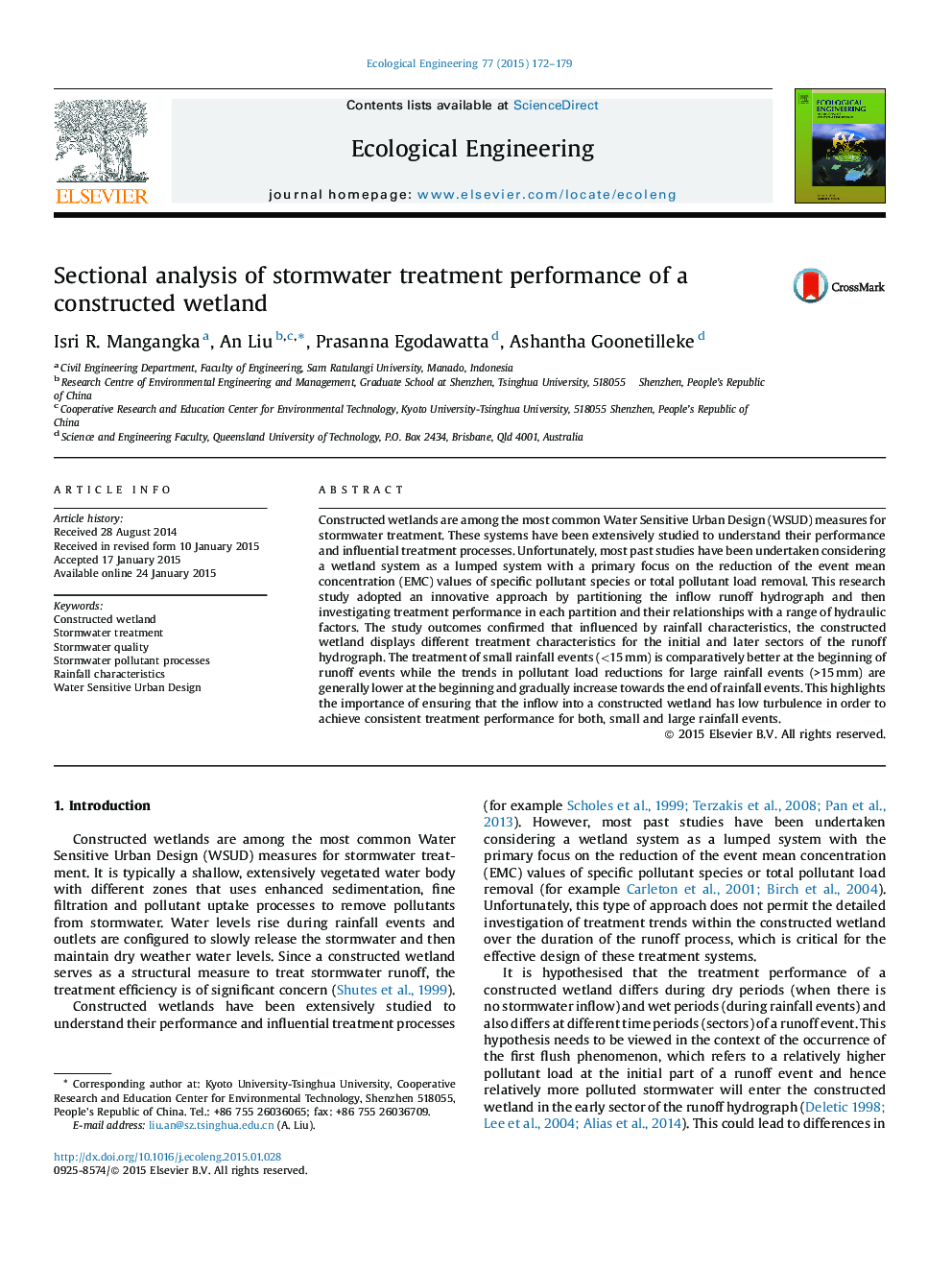| Article ID | Journal | Published Year | Pages | File Type |
|---|---|---|---|---|
| 4389262 | Ecological Engineering | 2015 | 8 Pages |
Abstract
Constructed wetlands are among the most common Water Sensitive Urban Design (WSUD) measures for stormwater treatment. These systems have been extensively studied to understand their performance and influential treatment processes. Unfortunately, most past studies have been undertaken considering a wetland system as a lumped system with a primary focus on the reduction of the event mean concentration (EMC) values of specific pollutant species or total pollutant load removal. This research study adopted an innovative approach by partitioning the inflow runoff hydrograph and then investigating treatment performance in each partition and their relationships with a range of hydraulic factors. The study outcomes confirmed that influenced by rainfall characteristics, the constructed wetland displays different treatment characteristics for the initial and later sectors of the runoff hydrograph. The treatment of small rainfall events (<15Â mm) is comparatively better at the beginning of runoff events while the trends in pollutant load reductions for large rainfall events (>15Â mm) are generally lower at the beginning and gradually increase towards the end of rainfall events. This highlights the importance of ensuring that the inflow into a constructed wetland has low turbulence in order to achieve consistent treatment performance for both, small and large rainfall events.
Keywords
Related Topics
Life Sciences
Agricultural and Biological Sciences
Ecology, Evolution, Behavior and Systematics
Authors
Isri R. Mangangka, An Liu, Prasanna Egodawatta, Ashantha Goonetilleke,
